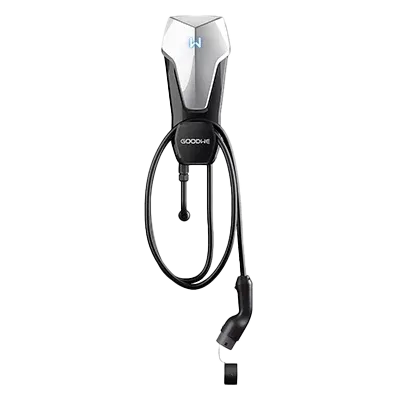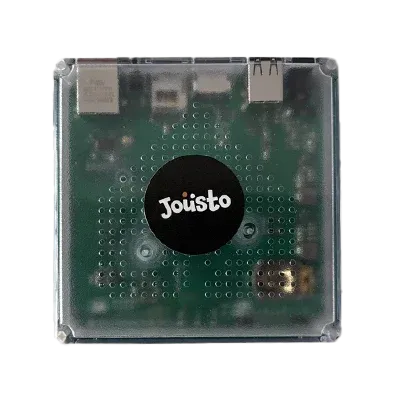
GoodWe EV Charger 7kW
Single-phase AC charger (IP66), perfect for most Aussie homes. Pair with Energy Hub for solar-aware charging.
Choose a charger, add the Jousto Energy Hub to charge from sunshine and cheap off-peak power, then book installation. Simple, smart, and ready for every EV.

Quality hardware, great value — and smarter with the Jousto Energy Hub.

Single-phase AC charger (IP66), perfect for most Aussie homes. Pair with Energy Hub for solar-aware charging.

Faster AC charging for three-phase homes and EVs that support higher rates. Solar-smart with Energy Hub.

Make charging solar-aware on day one. Includes Genius Agent to guide your self-setup & automations.
Learn more about the Jousto Home Assistant Genius.
Choose your charger
Pick 7kW or 22kW GoodWe model.
Add the Energy Hub
$249 with Genius Agent for self-setup.
Checkout online
We’ll confirm details and schedule install.
Charge on sunshine
Smart modes for solar and off-peak.

For South Australian homeowners considering solar, the difference between a solar system designed by a sales-driven company and one crafted by an independent solar designer can mean tens of thousands of dollars over the system's lifetime. Independent designers focus on tailored optimisation, ensuring that the system fits your specific energy usage and site characteristics.
Unlike sales companies, which often push preferred products and standardised packages, independent designers offer objective advice, recommend cost-effective components, and prioritise long-term returns. This approach not only improves energy yield but also avoids common design mistakes and ensures your solar investment pays off for years to come.
South Australia leads the nation in rooftop solar uptake, thanks to abundant sunshine and favourable policy support. With energy prices on the rise, many homeowners see solar as a practical solution for cutting costs and reducing carbon emissions.
However, the way a solar system is designed and sized can make or break its economic viability. This blog explores the two main design pathways available to SA homeowners:
Systems offered by solar sales companies
Solutions provided by independent solar designers
We’ll break down the financial, technical, and long-term implications of each approach—and show why going independent delivers the strongest economic outcome.
Solar sales companies often prioritise sales volume. As a result, they may present you with package-based solutions, designed for simplicity and speed rather than performance.
Limited brand range (aligned with their commercial partnerships)
Standardised system sizes
Minimal site-specific analysis
Sales-driven priorities over user outcomes
While these systems might appear competitively priced, they’re often suboptimally sized, overlook shading issues, and may use lower-quality components that reduce performance and lifespan.
Independent designers operate with no sales quotas or brand affiliations. Their only agenda is to design the best possible system for your property and usage patterns.
Fully customised system designs
Wide selection of brands and technologies
Thorough site-specific shading, tilt, and orientation analysis
Designs that factor in future needs like batteries or EVs
They work as solar consultants, not product pushers—giving you peace of mind and helping you avoid overspending on inappropriate or mismatched technology.
Independent solar design begins with your energy bills, not a sales script. The designer reviews:
Past consumption patterns
Roof shape and orientation
Household energy usage peaks
Future considerations (e.g. EVs, pool pumps, battery storage)
This ensures the system is neither over- nor under-sized, providing maximum return on investment while avoiding unnecessary costs.
In South Australia, north-facing panels at a tilt angle around 30–35° generally provide the best year-round performance. However, independent designers may:
Recommend east-west split arrays to match usage patterns
Design systems that reduce export losses by shifting production to when you’re home
Use shading simulation software to optimise panel placement
All of these increase self-consumption, which is far more valuable than exporting to the grid at low feed-in rates.
Choosing the right inverter is essential. Oversized or undersized inverters lead to clipping or inefficiency, which impacts energy yield and payback periods.
An independent designer:
Matches inverter size to panel capacity accurately
Plans for future expandability or battery integration
Recommends the right inverter type (string, hybrid, or microinverter)
By avoiding mismatches and future retrofit costs, homeowners save more across the system's lifespan.
Common pitfalls in solar design include:
Ignoring roof shading from trees or chimneys
Installing panels at inefficient orientations
Undersizing or oversizing the inverter
Choosing low-quality components to cut upfront costs
Failing to comply with local regulations or network limits
Independent designers bring experience and software modelling tools to the table, helping you avoid costly mistakes and ensuring compliance with South Australian grid requirements.
They also steer you away from systems that might work "on paper" but fail under real-world conditions.
Solar sales companies usually offer a narrow product range due to dealership arrangements or stock contracts. That limits your choices.
Independent designers provide:
Access to dozens of panel and inverter brands
Honest comparisons of cost, efficiency, warranty, and reliability
Insights into the latest technologies, including battery-ready and EV-integrated systems
This means your system is designed around value for money and performance, not just availability or margin.
Independent designers calculate ROI using real data:
Grid electricity costs
Self-consumption rates
Feed-in tariffs
Maintenance and warranty periods
Future energy price forecasts
They also consider available rebates like the federal STC program and any local South Australian incentives.
A properly designed system:
Has a shorter payback period
Generates more usable power
Requires less retrofitting or costly upgrades later

Jousto, a South Australian energy automation service, adds an extra layer of savings by automating when and how energy is used.
Automating appliances to run during solar surplus
Battery charging from the grid when prices are low
Preventing exports during negative feed-in pricing
Integrating with Home Assistant for full energy control
Once your home has a high-performing, custom-designed solar system, Jousto helps you:
Maximise self-consumption
Avoid costly grid imports
Automate time-sensitive energy tasks
Together, they provide a structural + behavioural energy solution, making your home truly energy-optimised.
If you’re considering solar, here are the right questions to ask:
How do you determine the ideal system size?
What tools do you use for shading and consumption analysis?
Are your design recommendations brand-agnostic?
How will this system perform over 10, 15, or 20 years?
Can this system support future battery or EV integration?
Get multiple quotes—include at least one independent designer
Check Clean Energy Council (CEC) accreditation
Consider a Residential Efficiency Scorecard to evaluate your home’s energy baseline
Use Jousto or a similar automation tool to optimise use after installation
Although it might seem like a bigger upfront effort, choosing an independent solar designer can save you thousands in avoided inefficiencies, not to mention improve system reliability and comfort.

For South Australian homeowners ready to go solar, independent design is the smartest economic choice. It offers:
Tailored solutions that match your energy use
Higher self-consumption and energy yield
Objective, brand-neutral advice
Avoidance of costly design mistakes
Better planning for batteries and future energy needs
When paired with smart automation from platforms like Jousto, the benefits only multiply. You’ll reduce grid reliance, protect against electricity price rises, and maximise the return on your solar investment.
Don’t just buy solar—design it wisely.
Already have a high-performing solar system—or planning one through an independent designer? It’s time to make it smarter.
Jousto empowers South Australian homeowners to get even more value from their solar investment by automating how and when energy is used. Whether it’s running your appliances during solar peaks, charging your battery when energy is cheapest, or avoiding exports during low or negative feed-in tariffs—Jousto handles it all for you.
✅ Maximise self-consumption
✅ Minimise grid costs
✅ Integrate with Home Assistant
✅ Automate appliances and storage systems
👉 See how Jousto can supercharge your solar setup
Smarter energy. Greater savings. Effortlessly.

© Copyright 2025.Honen Lead Generation.
All Rights Reserved.
Phone: 0489 261 333
185 Morphett St, Adelaide, SA, 5000